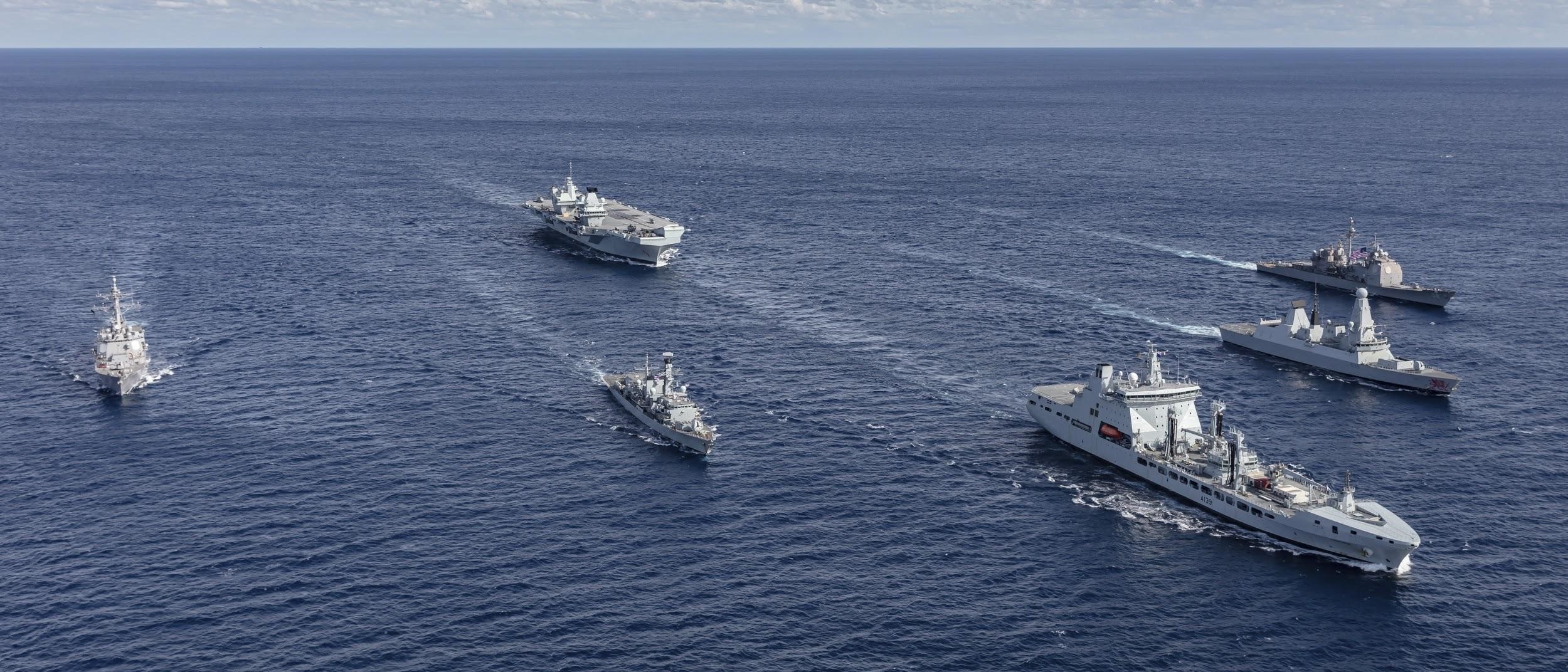In early August 2020, we started exploring interoperability and interchangeability between Royal Navy and US Navy digital applications. We used a virtual workshop to establish links between two digital delivery teams, test methods for international collaboration and develop deeper technical collaboration.
The Special Relationship
The Royal Navy and US Navy have a long history of working together, and this alliance is as important as ever in a rapidly changing digital world. However, effective collaboration with foreign partners can sometimes be challenging due to bureaucratic process, time zones, tooling and information handling controls. COVID-19 hasn’t helped either, denying us opportunities for high quality face-to-face interactions. Despite this, two programs, one Royal Navy and one US Navy, are working closely together to overcome these challenges. This is just one part of a wider initiative to establish better interoperability and interchangeability of technology between the US and UK.
Blogging to share with others
Given these challenging circumstances, we wanted to capture what we did and how we ran it for anyone in a similar position. International collaboration is a great way of improving our capabilities and the capabilities of our allies. It’s also a great way to bring different perspectives into digital teams. So, it’s essential we’re effective at sharing best practice in digital delivery and collaborating on research and development on critical technologies such as Artificial Intelligence/Machine Learning (AI/ML).
During a meeting in March 2020, senior Digital and AI leaders in the Royal Navy and US Navy provided us with a mandate to aggressively explore, develop, and demonstrate how we make our applications work together (interoperability) and how we can seamlessly use each other’s technology (interchangeability). Royal Navy Digital Services and our US counterparts developed a collaboration plan to look at specific pieces of technology and the methods we use to research, design and build software.

Running the workshop
Our first major activity was a virtual two-day workshop to help two digital delivery teams understand the products they’re each working on and to establish great working relationships. One team is delivering an application to support maritime sustainment planning for the Royal Navy while the other is delivering an application to enable digital maritime maneuver planning for the US Navy.
Here are some of the things we did to create a relaxed environment, facilitate information exchanges and developed a clear plan for further work:
- we opened with an icebreaker to create a relaxed environment and initiated friendly conversation between the teams by playing an an international version of 4 truths and 1 lie and the US team correctly identified our lie (these are listed at the end to see if you’re able to guess the lie!)
- We agreed on a common set of secure online collaboration tools. We used a virtual meeting space with small, but useful features like ‘raised hand’ and chat, and a separate online whiteboard to capture questions, ideas and retrospective observations. The whiteboard was introduced at the start of the workshop and content was added by all throughout the sessions.
- teams provided live demonstrations of their working software
- we used a combination of the whiteboard notes and a final session to collate and discuss ideas for deeper dive sessions, prototyping and testing
- we had a dedicated facilitator responsible for managing the whiteboard, keeping the sessions to time and seeding discussion
- we ran it over two half days to make the most of the overlap in US and UK working days. The timing also allowed participants to avoid video fatigue and to think between sessions.
- we set up themed sections for the workshop and alternated between US and UK briefings/demos so that neither team became saturated by new information
What’s next?
The workshop generated 12 areas for follow-on collaboration, which we’re finalising with our US counterparts. They include:
- demonstrating US and UK application interoperability using modern application programming interfaces (API)
- exploring and understanding software development and deployment processes to allow us to exchange applications
- testing the Royal Navy User Interface Design System with US Navy applications
- sharing practices in user-centred design
We’re already well underway with sharing user-centered design practices and the Design System collaboration. Over the next few months, we’ll be completing the necessary international agreements and taking steps to establish collaborative software development environments. Throughout this pathfinding process, we’ll be learning and evolving with the goal of developing better digital and intelligent capabilities and teams to make our navies stronger.
Meanwhile, our shared longer-term aspiration is to develop the concept of joint UK-US Development Squadrons (DEVRON). The Royal Navy and US Navy Digital & AI DEVRON will build on strong digital capabilities to develop AI/ML which supports fleet operations centers to tactical-level units, and interoperability with joint service partners.
Guess the UK lie:
- the Queen owns every swan in the UK
- in 1814 London suffered a Great Beer Flood, in which 8 people drowned
- in the Royal Navy, all ships’ cats have the honorary rank of Commander so they can enter officers’ quarters
- in the UK, sausages used to be named “Bags of Mystery”
- no location in England is further than 75 miles from the sea
Leave a comment